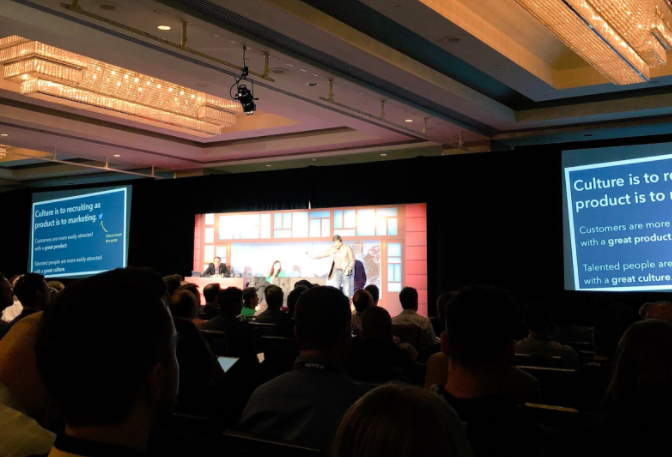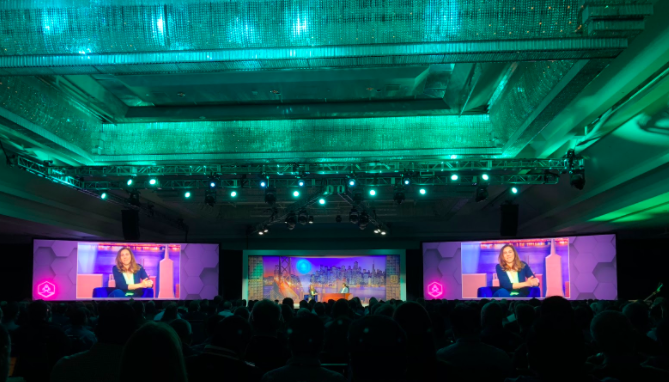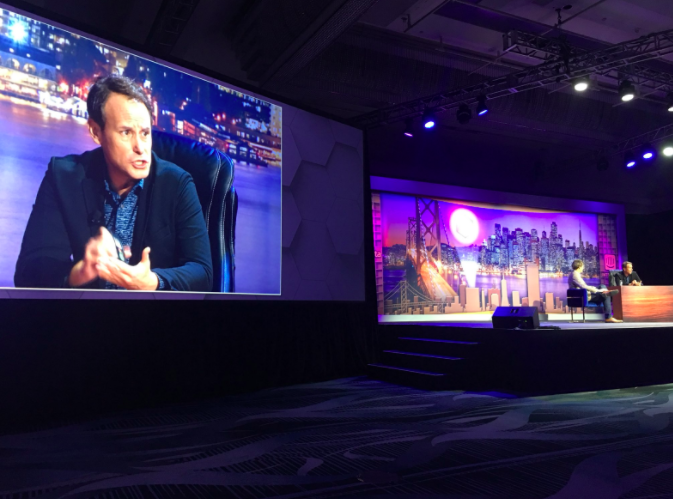Post written by guest blogger Drew Beechler.
2018 marks my third SaaStr Annual conference, and the content and conference keeps getting better! Sitting through the sessions this year, there was a great deal to learn from companies of all sizes and backgrounds presenting, attending, and sponsoring. Below are a few of my key takeaways from the conference this year.

- Culture Is a Product You Build
Dharmesh Shah, CTO and Co-founder at HubSpot, and Katie Burke, Chief People Officer at HubSpot, sat down in a fireside chat with Jason Lemkin on Tuesday to talk about how they built the HubSpot culture. The conversation was one of the most candid and insightful conversations of the week.
Dharmesh and Katie noted that you have to think about your culture as you would a product. “Culture is a product you build. And your people are its customers.” Culture is to recruiting as product is to marketing. Your customers and prospects are much more easily attracted to an amazing product. Conversely, talented people are more easily attracted with a good culture.
Everyone in your company should be working on culture as well—it’s not just one person’s job. Katie noted that, “Our employee experience is one of the most valuable products we offer. It is the singular way we win. Our people are our biggest asset.” We saw the same thing at ExactTarget with our “Orange Culture.” Scott Dorsey noted at SaaStr Annual 2016, “Over the course of time, we realized our culture was a major differentiator. I wanted us to own a color, and that color became ‘Orange.’ It became such a big part of our brand that ‘Orange’ became how we described our culture — it was the thread that powered us throughout the business.”
One of their biggest mistakes at HubSpot they noted was that they should have started even sooner—especially on diversity and inclusion. That doesn’t mean, though, that you can’t address and fix the issue. Fixing a culture issue, though, can be much harder than issues in other parts of the business. Dharmesh noted, “We talk a lot about product debt in software. The idea of people debt also very much exists. I think people debt, though, has a higher interest rate than product debt. And it’s hard to change.”
- Let Your Product Be Your Salesperson
David Skok of Matrix Partners also gave an amazing presentation on Tuesday morning on SaaS metrics. He dug into the nitty gritty details on sales hiring, quota attainment, CAC/LTV, and much more. One thing that stuck with me was his comments around turning your product into a sales person. He noted, “After scaling your sales team, the product can become your salesperson. Use your product to wow customers in the demo and remove the barriers for the sale.”
In a post from last year, David talks about this concept of the “Time to Wow”—how long it takes before your customer gets to the point of experiencing gratification from using your product. His suggestion is to move this “wow moment” upfront in the sales cycle or demo. This is how you turn your product into a salesperson with freemium version, free trials, and in the demo itself.

- Look Beyond Revenue
Karen Peacock, COO at Intercom, sat down with Bessemer Venture Partners’ Byron Deeter to talk about the hyperscale growth at Intercom. One thing Karen noted that also permeated through many other sessions was that revenue and ARR are the end all, be all, but you need to have other true north metrics other than revenue. If you just focus on revenue, you don’t look as much at the long-term vision and the value of your product and business.
Karen suggested that you should focus on usage and value first. Engagement metrics help you determine if people are actually using your product—on both sides of the product marketplace. Track how your customers are using their product AND how often their end audience or stakeholder in using your product is being engaged with.
When looking at value metrics, you should be determining what benefits you provide your customers and how you can track those. Be very clear on the benefit you’re providing to customers. For Intercom, that value metric is how they help customers convert customers faster.
If you focus on making these metrics really successful, revenue will come. When you look at these metrics outside revenue as well, it gives your company a better way—other than “how much money are we making”—to capture if you are truly achieving the mission of your company. It also gives you a different yardstick and benchmark outside revenue that you can share externally with press, customers, and partners.
- Building a Diverse and Inclusive Team Needs to Be Intentional and a Top Priority
I don’t think anyone still needs to prove that diverse and inclusive teams lead to more successful, profitable teams and companies. SaaStr Annual focused a great deal this year on diversity and inclusion with a number of amazing sessions on the topic.
One major takeaway from these sessions for me was that building diversity across the spectrum needs to be intentional within your company. You can never be too early or too large to start making it a priority. You need to start with your “why”, just like in your messaging and positioning. As Wayne Sutton of Change Catalyst said, “ Executive teams need to be on the same page. Everyone needs to come up with the why. Why inclusion? Why diversity? Once we have that, then you can start measuring and holding people accountable.”
Jarin Chou also had an amazing takeaway from the sessions that “we need to be better at telling stories about minorities and women who are successful, so we can inspire more minorities and women to aspire to being in the industry.”
Know your why, be intentional with your efforts, and tell the stories that aren’t being told that will inspire the next generation of engineers, leaders, founders, and investors.

- SaaS Is Still Just Getting Started
My last major takeaway focuses more on the macro SaaS industry as a whole. Being at SaaStr and seeing all the sessions, the energy among attendees, and top-tier speakers, I came away with one resounding mantra: SaaS is still just getting started.
On Thursday morning, Tomasz Tunguz of Redpoint joined Jason Lemkin for a fireside chat to talk about the state of the SaaS industry. From ICOs to PE and M&A activity, Jason and Tomasz covered most of the biggest trends happening across the industry. Tomasz specifically noted, “The reality is that cloud software penetration is still really low…We’re not even into the late majority yet with SaaS. I think we’re probably in the 3rd or 4th inning.”
Over the last 20 years, we’ve seen a 20x increate in SaaS dollars, but the fact of the matter is that we’re still just getting started. From new funding vehicles like ICOs to expanding exit strategies through increased PE and M&A activity, we’re seeing major continued growth in the SaaS industry. One of the most interesting stats Tomasz cited was that 60-70% of all tech acquisitions in 2017 were not by tech buyers. All companies are quickly becoming tech companies, and all companies are very quickly becoming software companies in some shape or form.
The good news is that the SaaS industry is continuing to evolve and continues to be one of the major forces driving digital transformation and efficiency in companies of all sizes. This year’s conference was a great celebration of the SaaS ecosystem and learning from some of the brightest minds in the industry. I’m looking forward to seeing how SaaStr 2019 continues to set the bar higher!
Drew Beechler, Director of Marketing at High Alpha.

